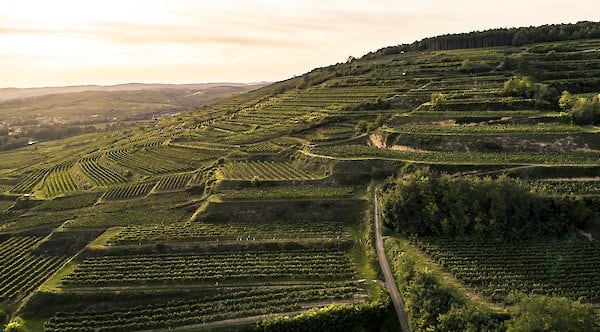Site, Origin & Climate
Ried Heiligenstein
The vineyard site
Ried Heiligenstein
The terraced south and southwest facing slope of Zöbinger Heiligenstein has a unique geological history that has been preserved in this particular area.
Most of the Heiligenstein vines are raised by the traditional Guyot method with the berries hanging 50-60 centimeters above the ground. About 30% of the vineyards are trained in the Lyra trellis system (for experimental purposes 1,4 ha are planted with Cabernet Franc). Thinning is done as required to restrict the average yield to 3500-4000 liters per hectare for this classic (Kamptal DAC) version.
The soil
The outcropping bedrock consists of a reddish-brown sandstone with a high feldspar content, coarse conglomerates, and minor siltstone. These sediments formed approximately 250 - 280 million years ago under arid conditions, in lakes, ponds, and ephemeral rivers. The rocks contain fossilized plants and gravels with clasts of volcanic rhyolites. Loess is only preserved in a few locations, within shallow depressions.



